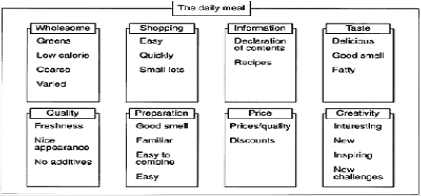←
Total Quality Management (TQM)
Affinity Analysis
Introduction:
The idea behind the method was to be able to go through large amounts of information in an efficient way and, at the same time, to establish groupings of the information. If the affinity technique had not been used we would never have discovered the difference—a difference which is actually very important that you communicate to your customers.
Importance of affinity analysis:
For the modern business person the affinity analysis is an efficient and creative way to gather and organize large amounts of qualitative information for the solution of a given problem.
STAGES 1, 2, 3 AND 4 (IDEA GENERATION)

- The first two stages of the process will be to define the problem and to generate ideas.
- When defining the problem it is very important to reach consensus about the words that you are going to use.
- There must be absolutely no doubt about the issue under discussion because if this is the case it may later on be very difficult to use the results.
- The generation of ideas will follows the traditional guidelines of brainstorming, structured or unstructured, with no criticism of ideas whatsoever.
Procedure for affinity diagram
STAGES 5, 6 AND 7 (IDEA GROUPING AND PRESENTATION)
- After generation of the ideas the grouping session starts. The idea is to arrange the cards in related groupings. This grouping is done by the entire team and it takes place in silence.
- In practice the team members start the grouping by picking out cards that they think are closely related and then placing these at one side of the table or wall, wherever the session takes place.
- Eventually groups of cards appear and the grouping process continues until all team members are satisfied with the grouping. If a member is not satisfied he simply moves a card from an existing group to another which he finds more appropriate.
- Sometimes a card keeps moving from one group to another. In such a case it is a good idea to break the silence and discuss the actual meaning of the wording on the card.
- When a card keeps moving the usual reason is that the wording on the card is unclear.
- After the grouping has come to an end it is time to break the silence. Now the team discusses the groups and they decide upon headings for the groups. Finally an affinity diagram showing the entire grouping is drawn.
- This technique is very efficient in connection with problem solving. It may seem very simple and unsophisticated but experience shows that it may be of great help at all levels of management. Furthermore it is a very fast method due to the silence.
- Time is not spent in argument; instead you go directly to the point and solve the problem!
Example:
-
As an example we report the results of a study made by a large supplier of food.

- He was interested in getting an idea of what the ordinary female consumer thought characterized the ordinary daily meal.
- He started the study by setting up two focus groups each consisting of eight persons.